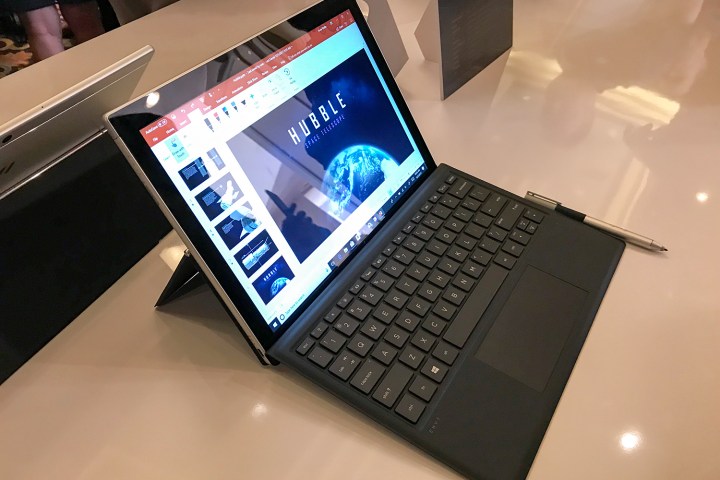
Among the first of Qualcomm’s new Always Connected PCs, the HP Envy X2 is available for pre-order, and its hardware suggests this laptop could live up to Qualcomm’s lofty promises of super-long battery life and always-on connectivity.
The new HP Envy 2-in-1 features a touchscreen display, support for an included stylus, and a removable soft-touch keyboard cover. On the surface, it looks, well, like a Microsoft Surface or any of the host of detachable tablt 2-in-1s currently on the market. But the Envy’s hardware makes it something a little more unusual.
Instead of an Intel Core processor like we usually see on 2-in-1s, the HP Envy X2 features a Qualcomm Snapdragon 835 processor with a 2.2GHz base clock and eight physical cores. For graphics, it features a Qualcomm Adreno 540 GPU, and that glossy touchscreen is a 12.3-inch IPS display with a max resolution of 1,920 x 1,280. The Envy X2 also boasts 4GB of RAM, a 128GB solid state drive, and a three-cell 49.33-watt-hour battery.
Additionally, the Envy X2 features a USB Type-C port, one nano-SIM card slot, a MicroSD card reader, and a 5MP front-facing camera, with a 13MP rear-facing camera. It will come in at 1.54 pounds, and it should be 0.27-inches thick at its thinnest point. The Envy X2 will be running Windows 10 S when it ships, despite the changes rumored to be coming to that particular platform.
Overall the HP Envy X2 is positioned to be a solid competitor for other $1,000 laptops and 2-in-1s, provided Qualcomm’s Snapdragon processors live up to their promises. Speaking of promises, HP claims the battery on the Envy X2 will not only see you through an entire workday, but it could see you through a couple workdays on a single charge — HP quotes its battery max life at 22 hours, or 19 hours of video playback.
Those are some bold claims for a 2-in-1 that will be among the first of its kind, but it falls in line with what we’ve already heard from Qualcomm about the capabilities of these new Always Connected PCs — long battery life, constant connectivity provided by a robust LTE connection. It’s available now for pre-order starting at $1,000, with an estimated ship date that according to MSPowerUser has been pushed back to March 23 from an earlier March 9 estimate. Right now, it’s showing as out of stock and so the pre-order button isn’t actually live, and note that whenever it ships, it will arrive with a one-year limited hardware warranty.
Updated on March 13: Revised estimated shipping date.


